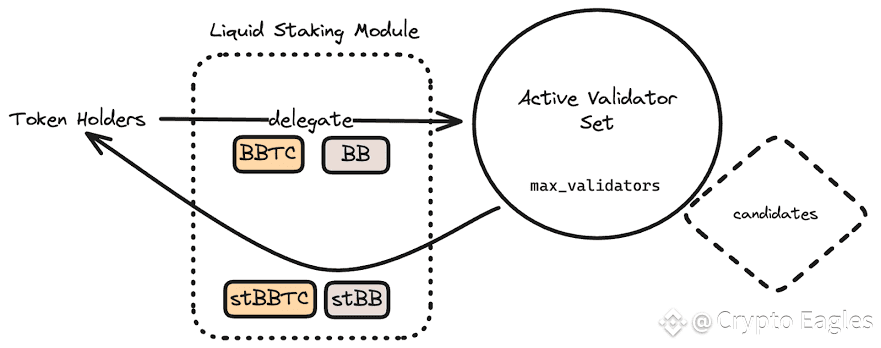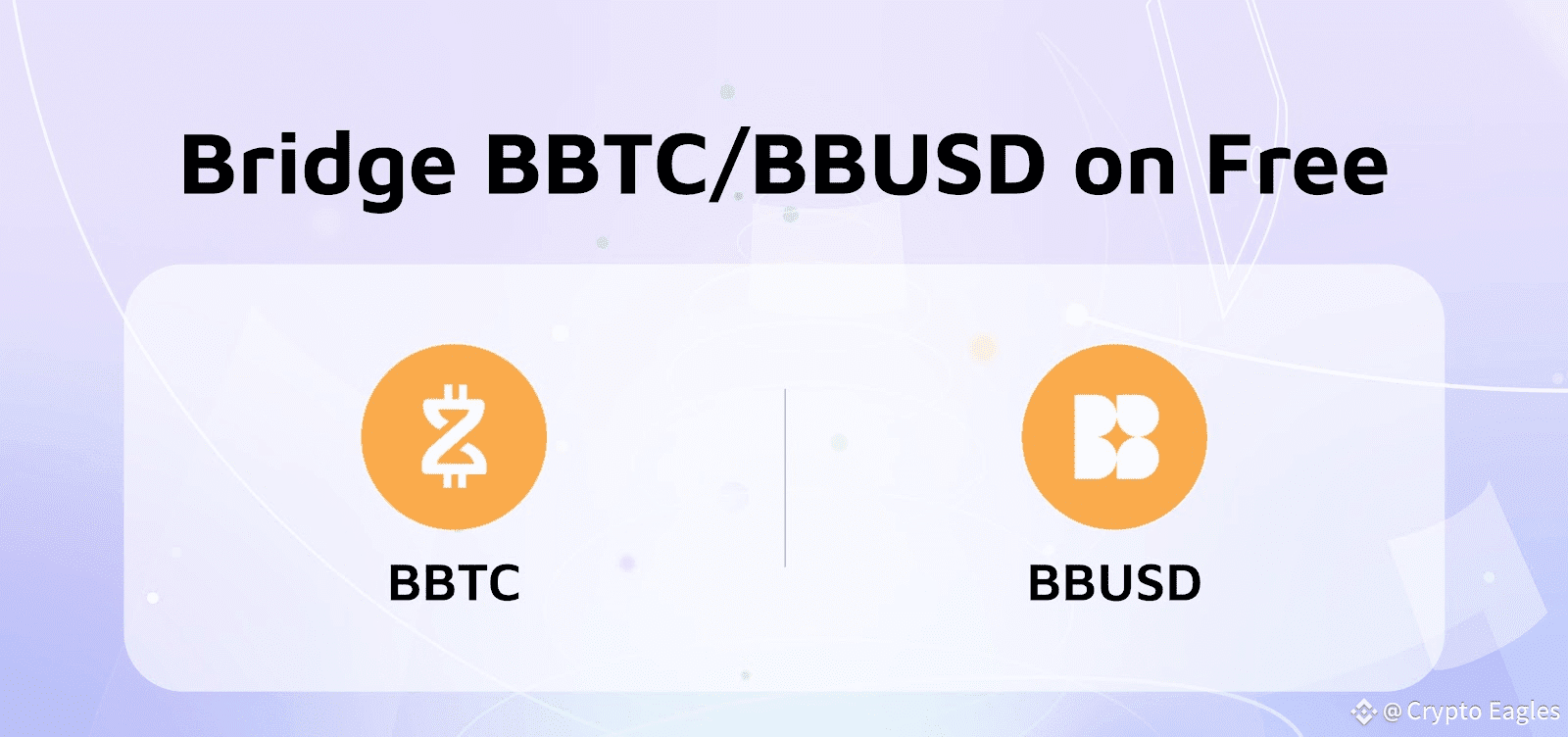Introduction: Why Tokenomics Defines Survival
In crypto, technology and narratives attract attention, but tokenomics decides survival. Countless projects have launched with bold visions, only to collapse when emissions overwhelmed demand or governance failed to align incentives. Token design is not a side note; it is the core architecture that determines whether users, investors, and developers remain engaged for the long haul.
For BounceBit, a BTC restaking chain with a CeDeFi framework, tokenomics carries even greater weight. The project is not just about offering yield for Bitcoin holders; it is about building a sustainable economic system where BTC, the native BB token, and liquidity custody tokens (LCTs) interact in a balanced loop. Understanding how BB works, how value accrues, and how governance evolves is crucial to assessing BounceBit’s long-term position in the competitive blockchain economy.
Dual Token Model: BTC and BB as the Foundation
Most proof-of-stake networks use a single token for consensus. BounceBit introduces a dual model: validators stake both BTC and BB to secure the chain. This design links Bitcoin’s credibility with the economic incentives of a native utility and governance token.
From an economic standpoint, this dual requirement creates a layered commitment. Validators must bring BTC liquidity, signaling long-term alignment with Bitcoin’s reputation, and BB tokens, ensuring skin in the game for ecosystem growth. It prevents mercenary staking where participants farm rewards without deeper involvement. For users, this duality increases confidence that the network is anchored by real collateral and by actors invested in BounceBit’s success

Supply Structure: Scarcity and Branding
The total supply of BB is set at 2.1 billion tokens, a deliberate echo of Bitcoin’s 21 million hard cap, scaled by 100 for practical usability. This decision blends symbolism with function. Symbolically, it ties BounceBit’s identity to Bitcoin, reinforcing the idea that the chain is an extension of BTC utility. Functionally, it ensures enough granularity for small transactions and staking rewards without inflationary optics.
How those tokens are distributed matters even more. Allocations for ecosystem development, validator incentives, community rewards, and treasury management are carefully structured to avoid front-loading supply. Long vesting schedules for team and investor allocations prevent immediate dumping, while a portion is reserved for long-term buybacks and liquidity programs. For token holders, this means value capture is not just about speculation but about participating in a cycle of growth and reinvestment.
Emissions and Reward Design
One of the greatest risks in crypto tokenomics is over-emission. Projects that flood the market with rewards often see unsustainable APYs that collapse once incentives taper. BounceBit addresses this by tying emissions directly to network participation and fee revenue. Instead of fixed inflation, emissions adjust to validator activity, LCT adoption, and transaction volume.
Rewards flow to multiple stakeholders. Validators earn a mix of BTC and BB for securing the chain. Stakers who delegate BB tokens share in emissions while absorbing slashing risks, aligning them with validator performance. DeFi participants earn incentives for providing liquidity, but these rewards are gradually tapered to push users toward real yield from fees rather than perpetual subsidies. The result is a token economy designed to shift from growth-phase inflation to maturity-phase sustainability.
Fee Capture and Buybacks
At the heart of BounceBit’s tokenomics is the idea of real yield. Fees generated across the ecosystem—transaction costs, staking commissions, DeFi trading fees, and RWA integrations—are channeled back into the BB economy. Portions of these fees are used for token buybacks, reducing circulating supply and creating upward price pressure. Others are distributed to validators and stakers, linking economic activity to direct income for participants.
This model creates a positive feedback loop. As more users adopt BBTC and engage in BounceClub applications, fee revenue grows. That revenue funds buybacks and validator rewards, which strengthen token value and security. Stronger token value attracts more users and liquidity, which increases fee revenue further. For long-term holders, this loop is the essence of sustainable tokenomics.
Liquidity Custody Tokens and Token Utility
The introduction of Liquidity Custody Tokens (BBTC, BBUSD, etc.) adds another layer to BounceBit’s economy. These tokens represent professionally custodied assets mirrored on-chain, providing a stable and trusted base for DeFi activity. While they are not governance tokens, their existence amplifies BB’s utility

Every time BBTC is minted or redeemed, it drives activity on the network, generating fees. Every time BBTC is staked, used in DeFi pools, or combined with BB in validator staking, it deepens demand for BB participation. In this way, LCTs indirectly expand BB’s role as the glue connecting custody assets to decentralized yield strategies. They also diversify the sources of yield beyond just BB emissions, making the system less reliant on inflationary incentives.
Governance Design: Balancing Retail and Institutions
Governance is often the Achilles’ heel of token economies. When dominated by whales, it alienates communities. When overly fragmented, it paralyzes decision-making. BounceBit aims to balance both sides by giving BB token holders governance rights while structuring proposals in a way that reflects the CeDeFi ethos.
Retail participants can vote on proposals that impact DeFi integrations, incentive structures, or BounceClub initiatives. Institutions and validators, holding both BTC and BB stakes, bring long-term stability to critical governance areas like custody partnerships, fee distribution, or security upgrades. The result is a hybrid governance model that mirrors BounceBit’s hybrid design: decentralized where flexibility matters, centralized where reliability is essential.
Long-Term Incentive Alignment
Tokenomics is not just about short-term rewards; it is about keeping stakeholders aligned over years. BounceBit approaches this with layered incentives. Validators are locked in by dual staking and slashing risks. Developers are motivated by grants and access to liquidity within BounceClub. Retail users are incentivized by staking yields and governance influence. Institutions are attracted by custody-friendly infrastructure and RWA integration.
By designing incentives for each group, BounceBit reduces the risk of mercenary capital that flees once emissions drop. Instead, it cultivates a diverse ecosystem where different actors remain engaged because their interests are structurally aligned with the network’s growth.
Tokenomics in the Competitive Context
BounceBit’s tokenomics should also be viewed in the context of competition. Many Layer-1s rely heavily on inflationary emissions to bootstrap ecosystems. Others concentrate too much power in validator sets controlled by a handful of whales. By contrast, BounceBit distributes responsibility and rewards across BTC holders, BB holders, and LCT participants. This layered model makes it harder for any one group to dominate and more likely that economic growth reflects genuine adoption.
Compared to Ethereum restaking protocols, BounceBit benefits from anchoring to Bitcoin’s brand power. Compared to BTC-sidechains or wrapped BTC models, it benefits from EVM compatibility and governance flexibility. Tokenomics is the differentiator that makes these competitive advantages durable rather than temporary.
The Sustainability Test
The ultimate test for any token economy is sustainability. Can it maintain security, liquidity, and value capture when incentives are no longer inflated? BounceBit’s roadmap suggests a gradual shift toward fee-driven rewards, with emissions declining as transaction volume, RWA integration, and BounceClub adoption increase. If successful, BB will evolve from a speculative token into a true utility and governance asset with intrinsic value tied to network performance.
Investors should watch three key signals to assess sustainability: proof-of-reserves reports for LCTs, validator participation and slashing incidents, and fee revenue relative to emissions. Positive trends in these areas would indicate that BounceBit’s tokenomics is maturing into a self-sustaining system.
Conclusion: Tokenomics as the Blueprint for the Future
In the world of blockchain, tokenomics is destiny. For BounceBit, the design of the BB token and its interaction with BTC collateral, liquidity custody tokens, and governance structures defines not just its short-term adoption but its long-term viability. The dual staking model anchors security in Bitcoin while rewarding ecosystem loyalty. The supply structure echoes Bitcoin’s scarcity while providing practical granularity. The fee capture and buyback mechanisms tie value directly to real usage. Governance balances retail voices with institutional stability.
Together, these elements create a token economy designed not for hype cycles but for endurance. BounceBit is not just financializing Bitcoin; it is building a sustainable governance and tokenomics framework that could serve as a model for the next wave of CeDeFi ecosystems. If it succeeds, BB will not merely be another token in a crowded market but a cornerstone asset in the new era of productive Bitcoin.



